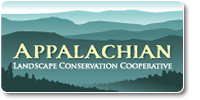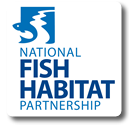Stream Bank & Riparian Restoration along the Wild and Scenic Cossatot River on the Ouachita NF
| Project Start Date | |
|---|---|
| Project Leader | |
| Organization |
Six riparian sites have severe erosion from loss of riparian vegetation and heavy recreational use. Riparian habitat function will be restored by stabilizing stream banks and planting vegetation. Stream habitat cover will increase with addition of materials to repair stream banks. Campsites will be designated and hardened. To measure effectiveness, water samples taken every 3 months over the past 4 years will continue for at least the next 4 years by the Cossatot River Watch Stream Team to compare pre- and post-restoration.
Importance to the Resource:
Reduce sediment loading for following benefits: 1) The Cossatot River is the most popular whitewater floating river in Arkansas. 2) The smallmouth bass within the project area is one of Arkansas's premier fishery as well as being an indicator species of water quality. 3) The leopard darter, a Federally listed endangered species, occurs downstream in the Cossatot River.
The Problem:
Erosion is from heavy recreational use on the ONF as well as from private lands surrounding these public lands. The community of Shady, less than 100 in population, is largely supported by recreationists. The pressure upon the river is intense and has resulted in a denuded riparian, slumping stream banks, unrestricted river access by foot and OHV and undesignated sites for camping.
The Objective:
To reduce sediment loading by restoring public lands and hardening areas and by teaching reduction techniques to the public for use on private lands. Reduction efforts are ongoing within this project site by County, Cossatot River Stream Team, and State and Federal agencies. Our goal is to bring in more community partners and schools to compliment these efforts to increase participation in protecting the river.
Method:
Construct log/rock cribs using heavy equipment and hand labor. Cribs will project into the stream and create overhead cover. Large boulders placed to armor the bank. Campsites terraced with logs and large rocks to create long, wide steps for access to the river. Large rocks placed to block access of foot traffic and OHV’s. Vegetation planted in denuded areas. Fire rings, tent pads and lantern posts installed.
On-going
bank stabilization/ in-stream restoration, vegetation planting
Associated Locations
| Town | zip code | county | state | congressional dist |
|---|
Barriers
| Name of barrier | Latitude | Longitude | FONS ID | FIS Project ID | FWS Acc. # |
|---|
Document Actions






